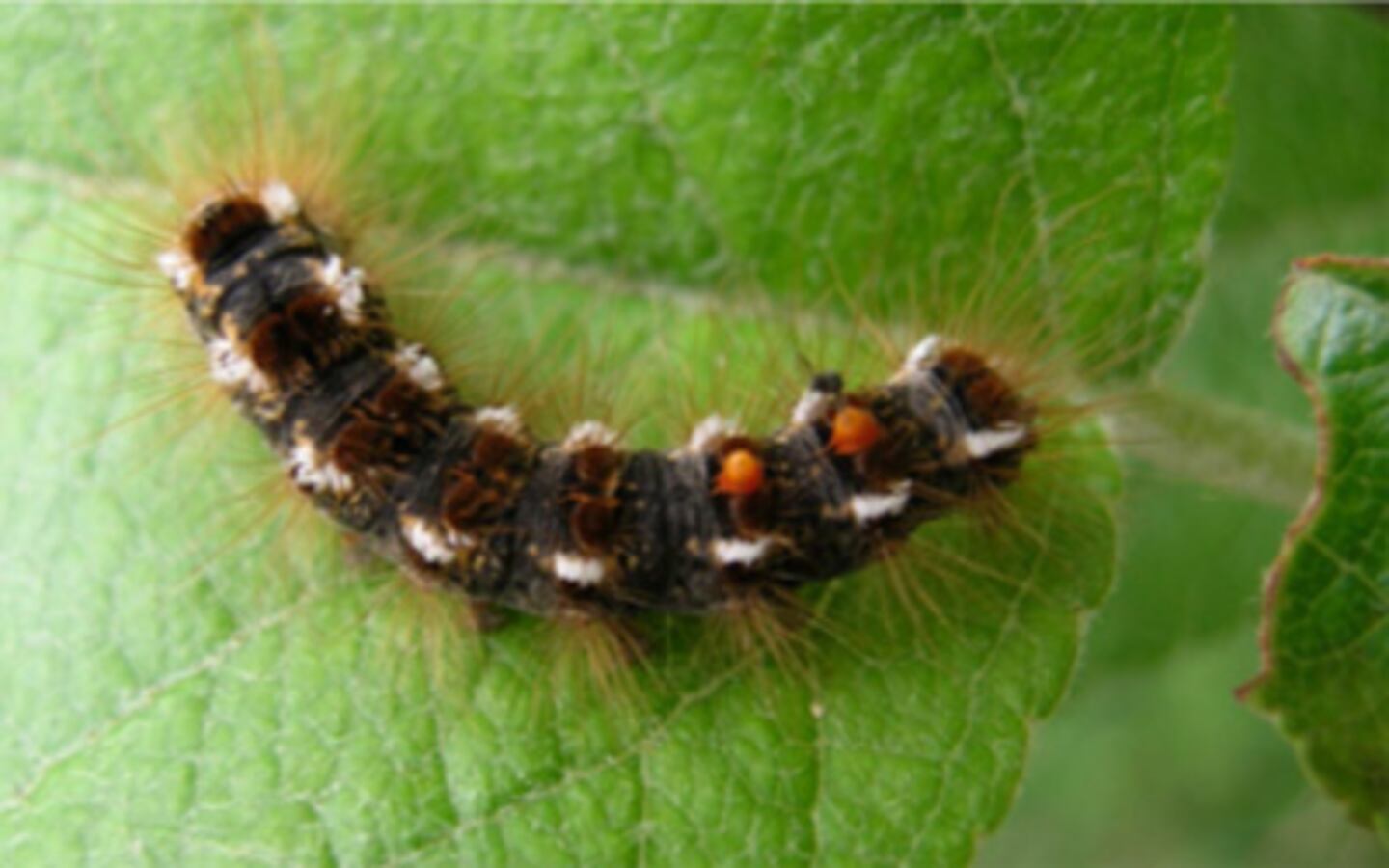CONCORD, N.H. — A pesky caterpillar with poisonous fine hairs that can cause painful rashes and respiratory problems has crawled back into the Granite State after more than seven decades, after wreaking havoc in New England in recent years.
Browntail moth caterpillars -- which have been found in coastal areas on Cape Cod, in Maine and some other parts of Massachusetts -- have poisonous fine hairs that can produce skin rashes similar to poison ivy, even when the exposure to them is airborne, experts say. Inhaling the microscopic hairs can also cause serious respiratory issues in some people.
In New Hampshire, Browntail moth caterpillar winter webs have been found and removed at the Isles of Shoals off of the coast, the New Hampshire Forest Health Bureau said Tuesday.
It is the first confirmed incident of the species in the Granite State in 75 years.
“We’ve been monitoring an infestation of browntail moth over the last decade as it expanded to most of southern Maine,” said Kyle Lombard, administrator of the New Hampshire Division of Forests and Lands’ Forest Health Bureau.
“While this first appearance in New Hampshire is offshore, now is the time for everyone to keep an eye out for these caterpillars because they can create uncomfortable and sometimes even dangerous health risks for some people,” Lombard said.
Most people affected by the hairs develop a localized rash that will last for a few hours up to several days. For more sensitive people, the rash can be severe and last for several weeks, according to the Maine Center for Disease Control and Prevention.
The rash results from both a chemical reaction to a toxin in the hairs and a physical irritation as the barbed hairs become embedded in the skin, health officials said.
The caterpillars are active from April to late June. Hairs remain toxic throughout the summer but get washed into the soil and are less of a problem over time.
Health and wildlife officials in several states advise against handling the caterpillars without wearing proper gloves and, when possible, a mask.
In Maine, scientists said a fungus that turns the rash-causing pests into the “crawling dead” may lead to a sharp drop in browntail populations this year, The Portland Press Herald reported.
Browntail moths have existed in New England since the late 1800s, and are most commonly found in isolated areas of Cape Cod and the Casco Bay region of Maine, according to the Massachusetts Forest Alliance. In the Bay State, the problematic caterpillars have also been reported in Essex and Plymouth counties and in the Boston area.
Caterpillars can be identified by their dark brown coloration, fuzzy appearance and two conspicuous red-orange dots on their tail end.
While oak and apple trees are primary hosts for browntail moth caterpillars, winter webs can also be found in coastal shrubs like beach plum and cherry, as was the case at the Isles of Shoals.
The winter webs are small, tight clumps on two or three leaves at the tip of a branch and tend to be completely enclosed in silk. They form in the fall and can be removed any time between November and mid-April.
Browntail moth webs differ from those of fall webworm, which are built into big nests in large areas of foliage in autumn. The webs of another commonly found species, the eastern tent caterpillar, are also large but only occur in spring.
Native to Europe, the browntail moth was accidentally introduced to North America in the late 1800s, eventually spreading to all New England states, New Brunswick and Nova Scotia.
Massive federal work projects in the 1920s and 1930s, in cooperation with biocontrol research, reduced the infestation area to a small region along the Maine coast. In 2022, it was found in more than 150,000 acres, mostly in the southern half of the state.
For more information about how to identify browntail moth caterpillars and their webs, and to report any sightings, visit nhbugs.org.
This is a developing story. Check back for updates as more information becomes available.
Download the FREE Boston 25 News app for breaking news alerts.
Follow Boston 25 News on Facebook and Twitter. | Watch Boston 25 News NOW
©2024 Cox Media Group








